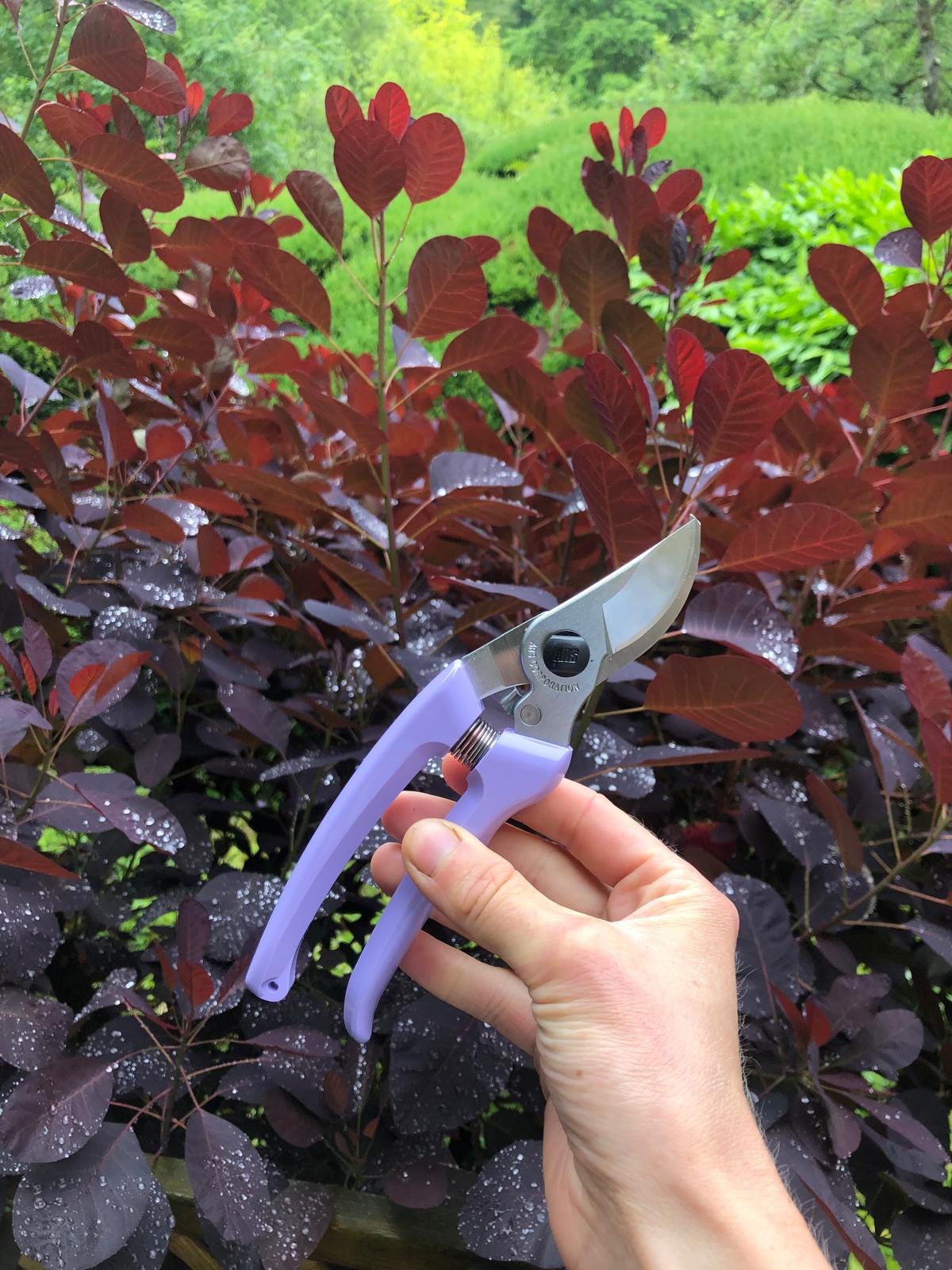This week, I’ve been trying to ground myself in nature, kneeling quietly in gardens to deadhead roses or snap off the finished pelargonium heads. I’ve been patiently waiting for watering cans to fill, adding shots of tomorite. I used Ars telescopic long pruner to carefully snipped off whippy wisteria growth - I will write a Substack on my gardening tools soon so watch this space.
Yesterday was an exciting day as I did a talk on sharpening for British tool company, Niwaki, stocking Japanese gardening products. It was at Hampton Court Garden Festival on the RHS ‘How To' stage. A small crowd as it was an end of day slot, but none the less generated some interest in caring for the tools and appreciating the value of well made, multi generational tools. It went well so I treated myself to some new Ars 130DX-V secateurs as a little reward. Their tools are also Japanese, using carbon steel and can cut through a whopping 19mm for £24.
Peak summer feels as though it’s here, plants are happily flowering, slugs and snails seem less hungry. The lilies are out and so are the stunning red beetles which have been nibbling their way through the tall waxy plants.
Gardeners tasks have been edging lawns, spot weeding, tidying up stray shoots on hedges and feeding. I generally like to leave weeds as feel that some can provide a certain beauty. For example, the delicate pink flowers of Chamerion angustifolium (willow wherb / fire weed) fit well sneaking into a full border. The small pink flowers of Geranium robertianum (herb robert) have lovely purple foliage and a stunning growing habit - one has covered my clients old garden shed and flowers in mass which he adores. This weed smells incredible too, a limey, very distinctive smell that it’s hard to put ones finger on.


I have a client who took over her mothers garden. Unfortunately, it’s become overgrown and when I garden, it’s a management situation. I’ll mow the lawn, try to keep the wild wisteria in submission, cut back brambles climbing into the fig trees and poking out where they can but mainly its the Pentaglottis sempervirens (Alkanet), Calstegia sepium (bindweed) and Arum italicum (Lords and ladies) which are the real problem.
I pull the delivish long strands of the bindweed out of the hydrangeas and rhododendrons. It looked so lovely in full bloom, I was quite struck this week. Seeing bindweed in this way makes you realise the power of nature, it will climb over and suffocate other plants until it is in prime location to flower towards the sun. A gentle reminder that nature is powerful.


The weather has been very up and down this week, it’s difficult when it rains and I feel conflicted about working. When there’s heavy rain, I don’t find it to the be conducive to good work in the gardens. Soil structure and lawns can be damaged, patios become muddy and I drip rain water all through my clients houses. Instead, i’ve spent more time at home getting on top of my paperwork and trying to organise my tools into my very small car.
A highlight of this gorgeous purple clematis, I think Clematis ‘Olympia’. It’s climbing over roses and flowering alongside. I have a soft spot in my heart for clematis, they loyally flower and it’s a good year for them.
Allotment developments
The tomatoes and sweetcorn have come on massively, doubling in size. I’m upset as rude snails have eaten the top of my new sprouted dahlia, I’m hoping it might recover. I overwintered this treasured bulb and if it it didn’t get a chance to grow, that would be a real shame.
This week, I harvested and froze my raspberries, plums and gooseberries - my partner and I will enjoy them with our breakfasts. I picked and ate a few of the first blackberries, sharp yet a little sweet. My partner has big plans to make a plum cake and together we’ll make jam and gift this at Christmas.


I helped my neighbour set up his cabbage net as cabbage butterfly are rife. I found one fluttering inside my netted cabbage. After inspection of the underside of the leaves, I found evidence of what looked like old eggs which had hatched. I’m going to regulary spot check them and keep the netting in place.


Birds
I visited Sittingbourne last week, specifically relishing this nature reserve and the Shellness beach. I was able to see flocks of oyster catchers scouring the beach, poking their long beaks into the sand. Plovers pierced through the watery sand with their small feet, leaving magical footprints. The particular beach which struck me is a SSI (site of scientific interest) which means you aren’t able to take anything away with you. My good friend found a sea gull head which we had to leave in place and I found some striking feather which I was only able to walk by.
I started a feather diary this week, collecting feathers from different species and including notes on the bird. I was to learn more about birds and feel this is a good way to start.
Bird of the week
Field fares (Turdus pilaris) - found in the thrush family. We camping in an overgrown field filled with field fares, they chirped all day and fluttered suspended in the air until they would dive down into the long grass.
Some field fares nest on the ground however generally they nest in the forks of the trees. They roost in large flocks, migrating in Winter from Scandinavia and Russia and returning back in April.
Each year, thousands of fieldfares leave Scandinavia and even Russia to spend the winter in the comparatively mild UK. The birds typically begin to arrive in September and nearly all will have left by late April.







